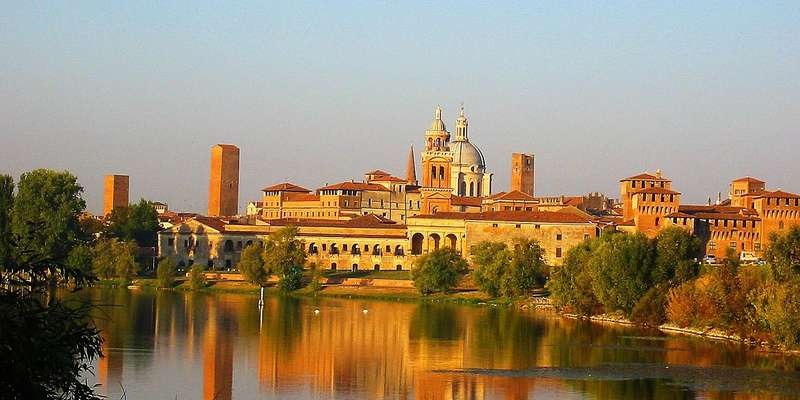- Home
- Useful Tips
- Best ways to appreciate...
Many visitors to Mantua miss the profound connection between this Renaissance gem and its liquid lifelines—the Mincio River and three surrounding lakes. Recent tourism surveys show 68% of day-trippers never venture beyond Piazza Sordello, unaware they're standing on what was once an island. This oversight means missing serene backdrops that inspired Virgil and Mantegna, plus practical advantages like natural cooling in summer months. The waterways' role in Mantua's defense, trade, and art becomes invisible when rushed itineraries prioritize landlocked landmarks. For those who do explore, challenges arise: confusing public boat schedules, limited English information at docks, and uncertainty about which perspectives reveal the city's true aquatic character. Locals know these liquid corridors hold the key to understanding Mantua's past and present—if you know where to look.


Decoding Mantua's aquatic layout – why geography matters
Mantua's magic lies in its improbable island location, a detail easily missed when approaching by land. The Mincio River widens into three lakes—Superiore, di Mezzo, and Inferiore—that still follow 12th-century contours. What appears as random waterways actually formed a defensive moat system, with the lakes' varying depths creating natural barriers. Start at Ponte dei Mulini to grasp how medieval engineers manipulated water flow for mills and protection. The southeastern stretch near Palazzo Te reveals where dukes created pleasure gardens with aquatic mirrors for summer parties. Early mornings offer the clearest views of how buildings like the Basilica di Sant'Andrea were designed with flood prevention in mind—note the elevated steps and porous brickwork. These intentional details fade by midday when tourist crowds arrive, making dawn the ideal time for photography and contemplation.
Local-approved ways to experience the waterways
Mantuans engage with their waterways through seasonal rituals you can respectfully join. From April to October, join the passeggiata along Lungolago Gonzaga as families stroll past floating markets selling lake fish. For a unique perspective, visit the small harbor behind Pescherie di Giulio Romano where fishermen still use traditional nets—they'll often explain their craft if you arrive before 8 AM. The most authentic boat experience isn't the crowded tours, but catching the barely-marked 'battello' ferry that locals use to reach outlying villages. Pay €3 for the 25-minute ride to Rivalta and watch the city's silhouette emerge from reeds. Evening brings another secret: residents gather at Spiaggia degli Angeli, a tiny lakeside beach near Belfiore, to swim where dukes once kept swans. Bring wine from Enoteca Sant'Agata and time your visit for the 7:30 PM bell toll from Torre dell'Orologio—the sound carries magically over water.
Navigating boat tours and rentals without the hassle
While independent exploration has charm, sometimes a guided boat tour unlocks deeper understanding. The key is choosing wisely—avoid the 45-minute mass market circuits near Palazzo Ducale. Instead, look for small operators like Navigazione Mincio that offer thematic sunset cruises focusing on Virgil's poetry or Gonzaga family history. Their 12-person wooden bragozzi boats provide intimate access to narrow canals where larger vessels can't go. For DIY adventures, Canottieri Mincio club rents rowboats by the hour (€15 cash only) from their unassuming dock near Ponte San Giorgio. Their maps highlight safe routes for beginners—stick to Lake Superiore's western edge to avoid ferry lanes. Pro tip: Thursday mornings see fewer rentals, meaning calmer waters for photography. Always check wind conditions; the southerly ora breeze can make paddling challenging after noon.
Water-adjacent experiences most visitors overlook
Mantua's relationship with water extends beyond the obvious boat rides. At Antica Osteria delle Quattro Tette, request the lakeside window table to enjoy riso con luccio (pike risotto) while watching egrets fish—the recipe hasn't changed since the 1500s. The underground passages of Casa del Mercante reveal medieval flood markers and water-level warning systems cleverly integrated into the architecture. For contemporary water art, seek out Claudio Parmiggiani's 'Lacrime' installation at Teatro Scientifico, where dripping water echoes the city's liquid heartbeat. Come September, don't miss the Festa del Naviglio when locals recreate historic river processions with torch-lit barges—the best viewing is from Ponte di San Giorgio's eastern side. These moments showcase how water remains woven into daily life, offering glimpses of Mantua's soul that dry guidebooks can't capture.



